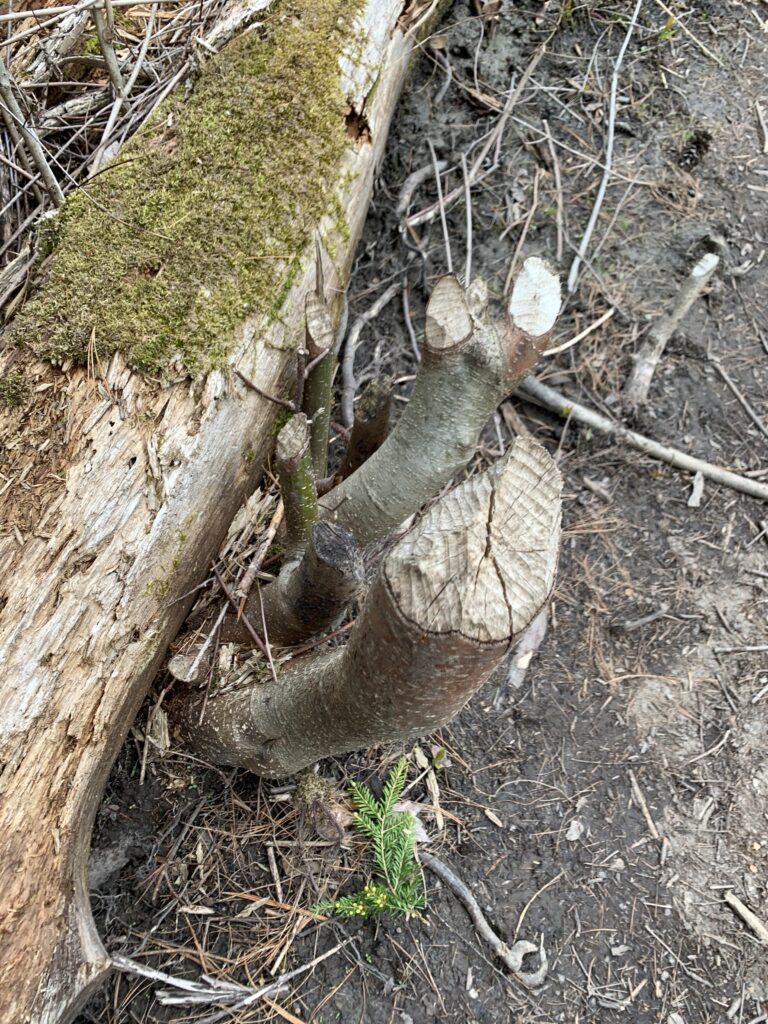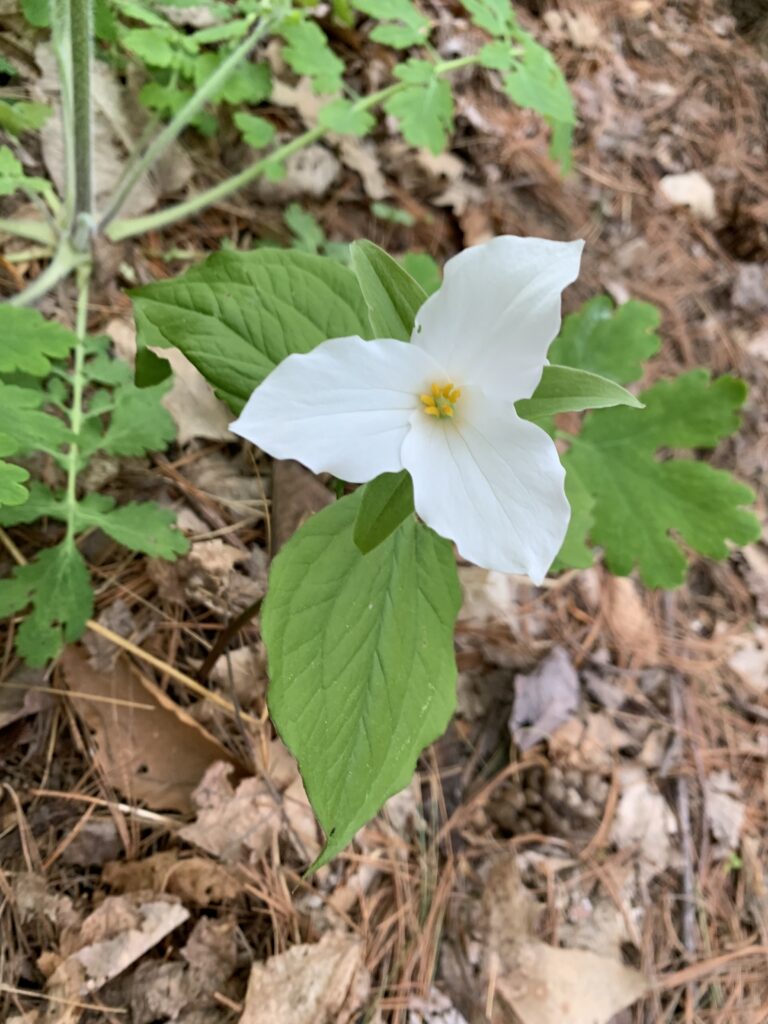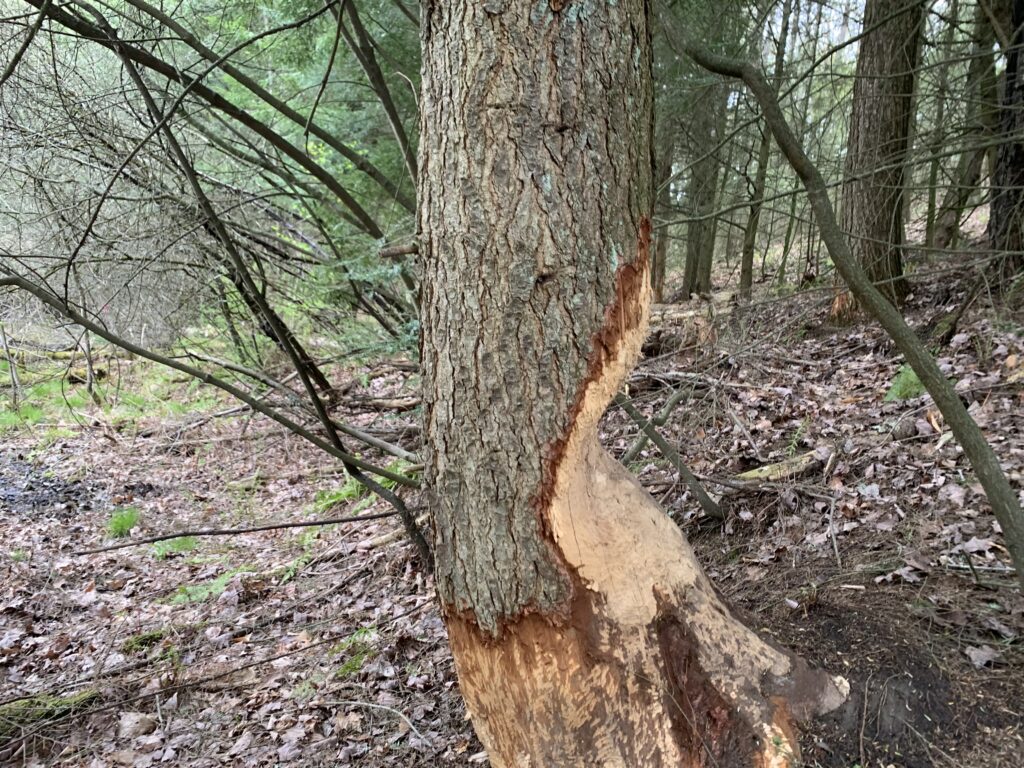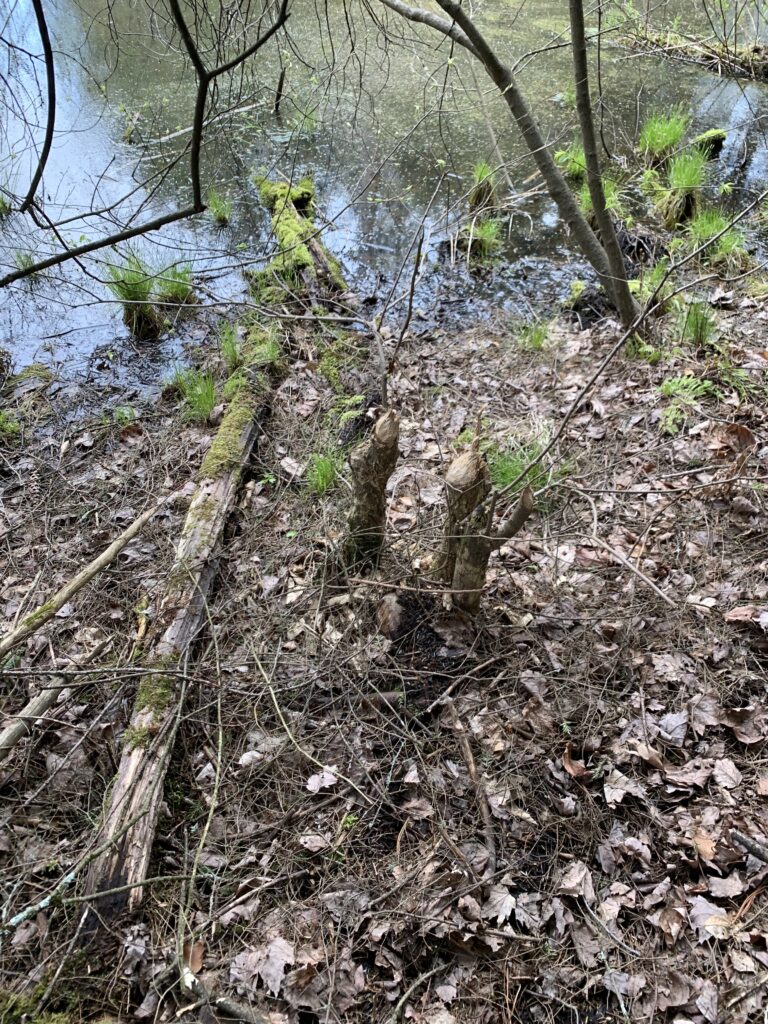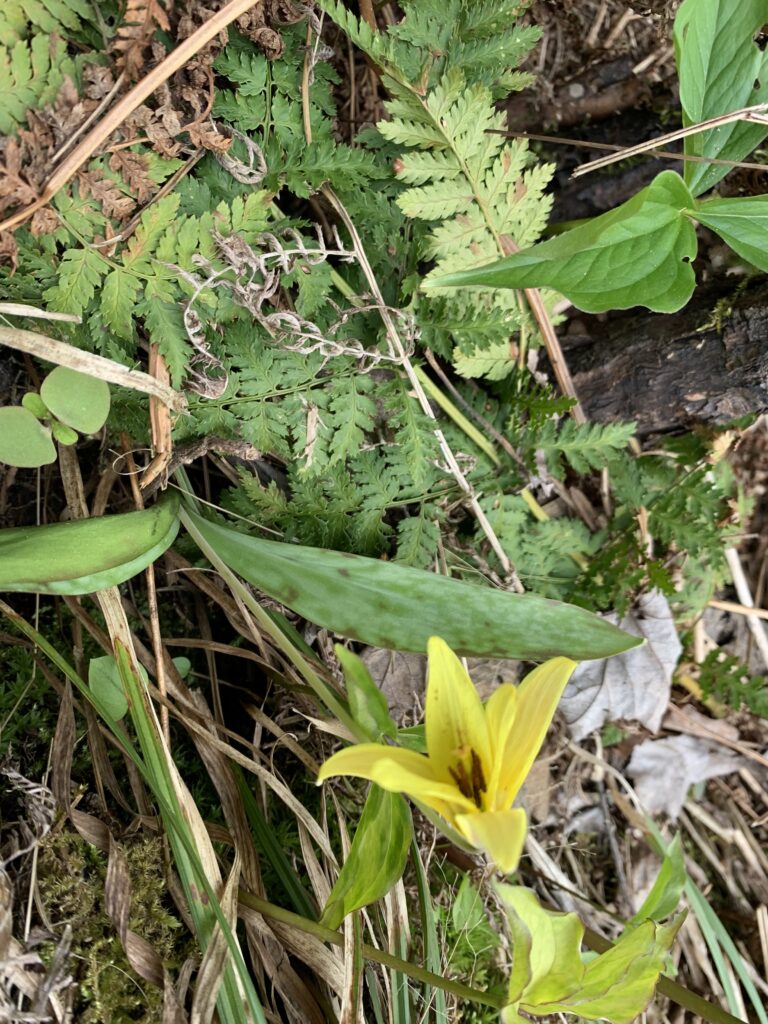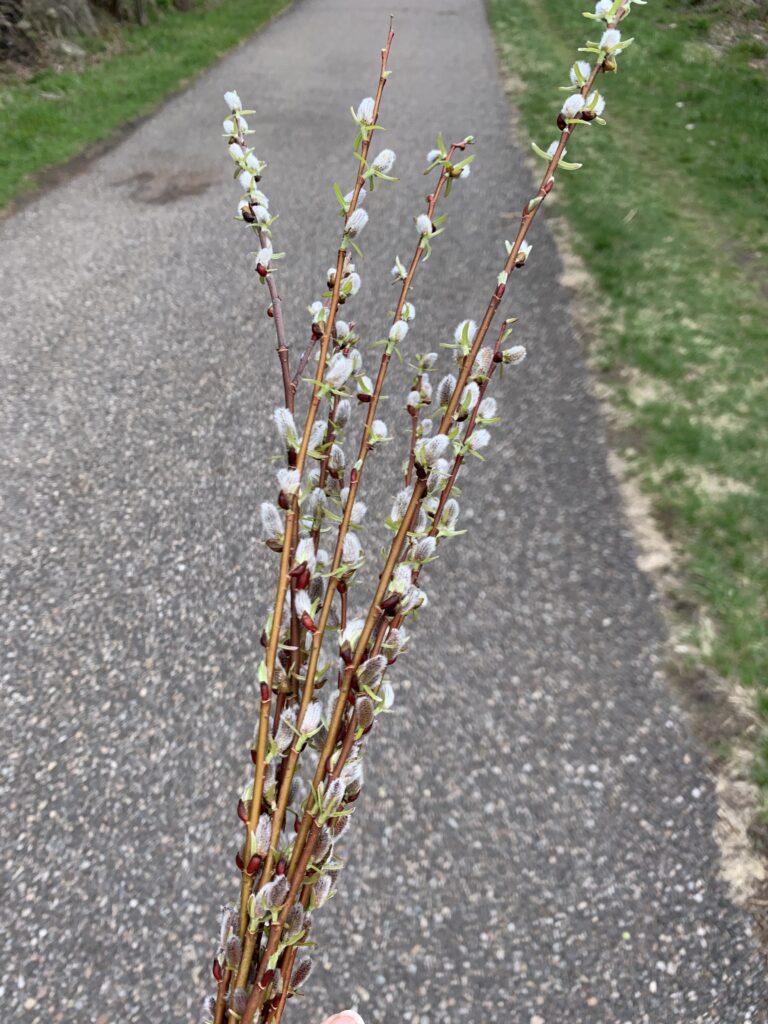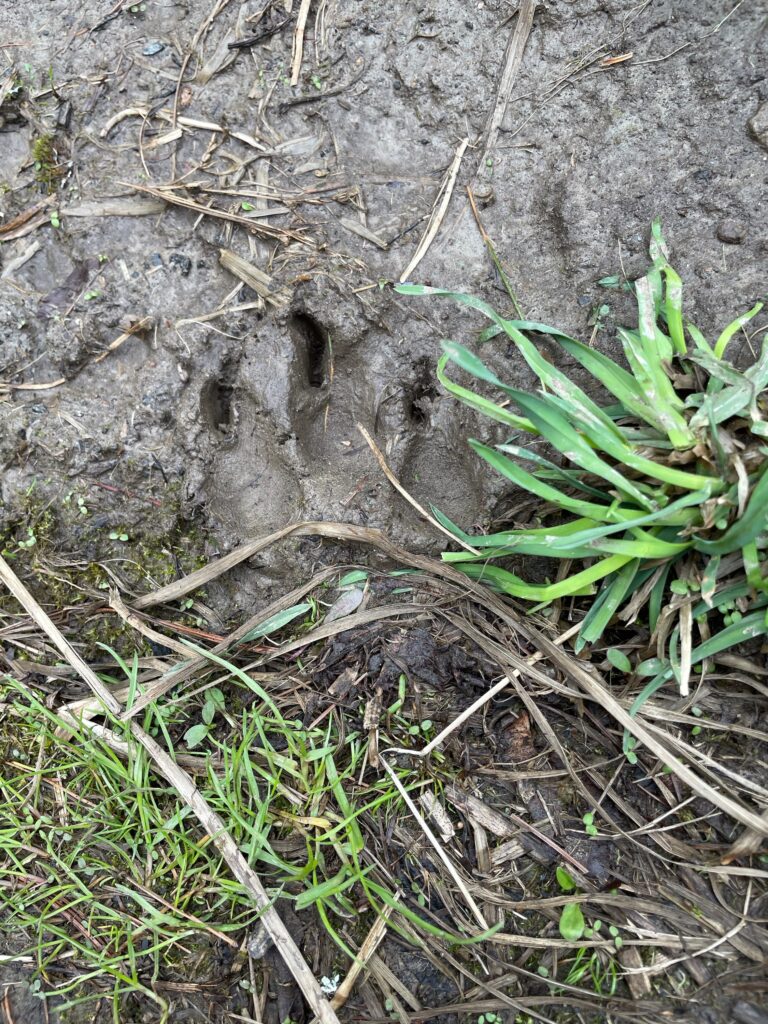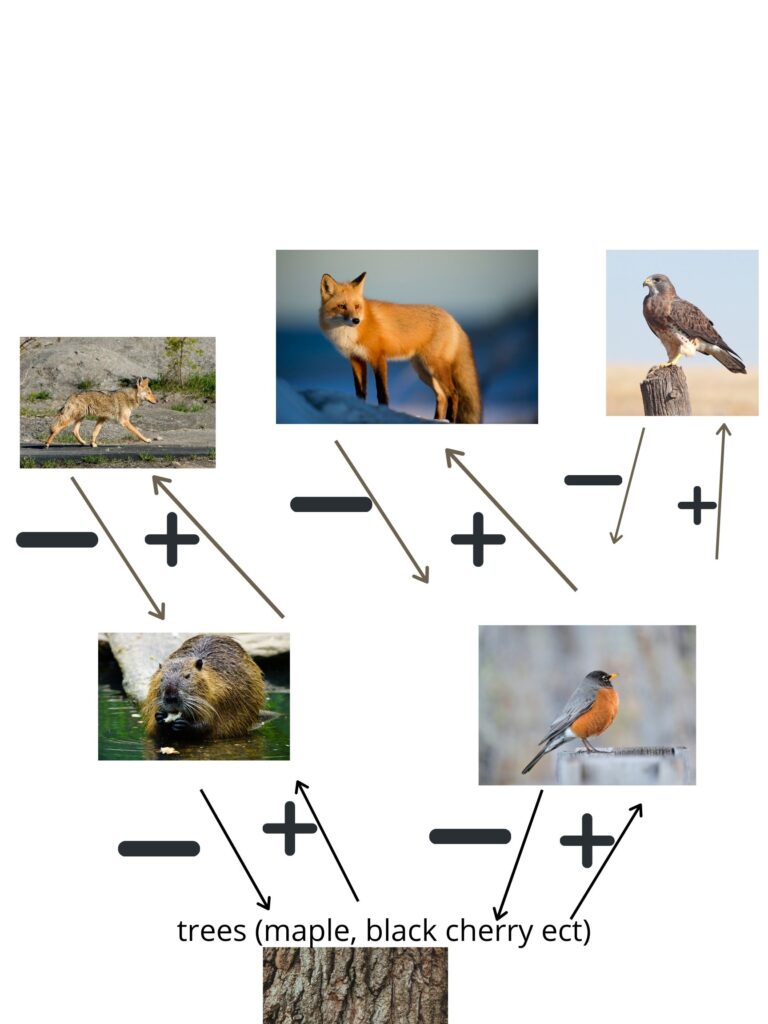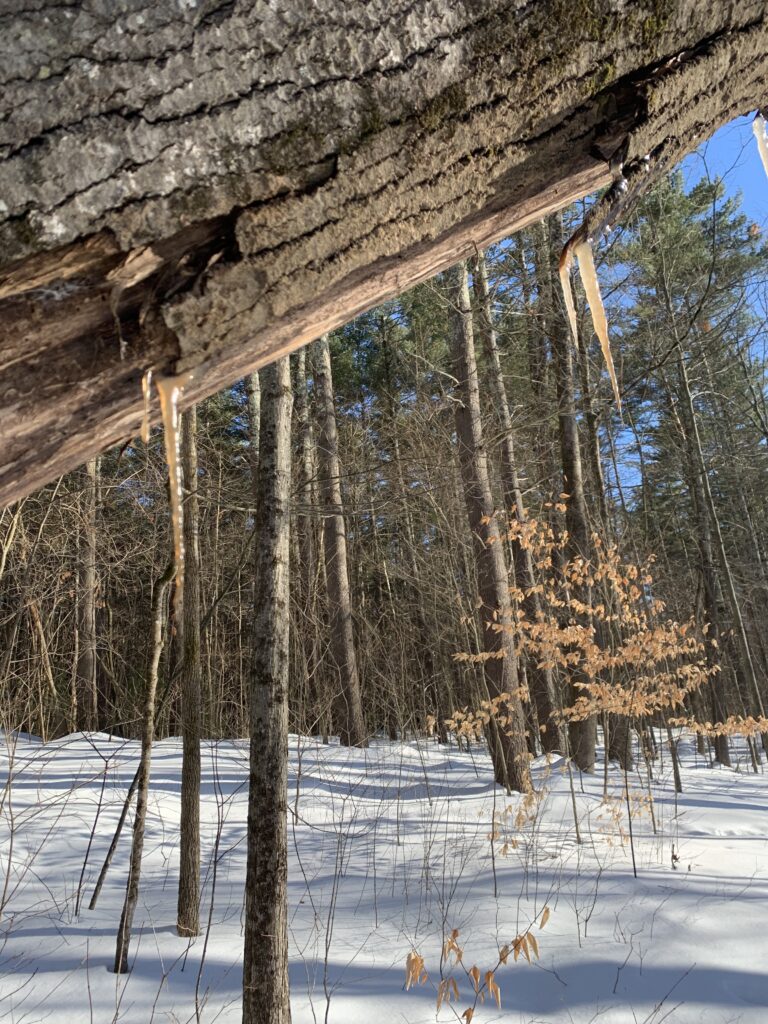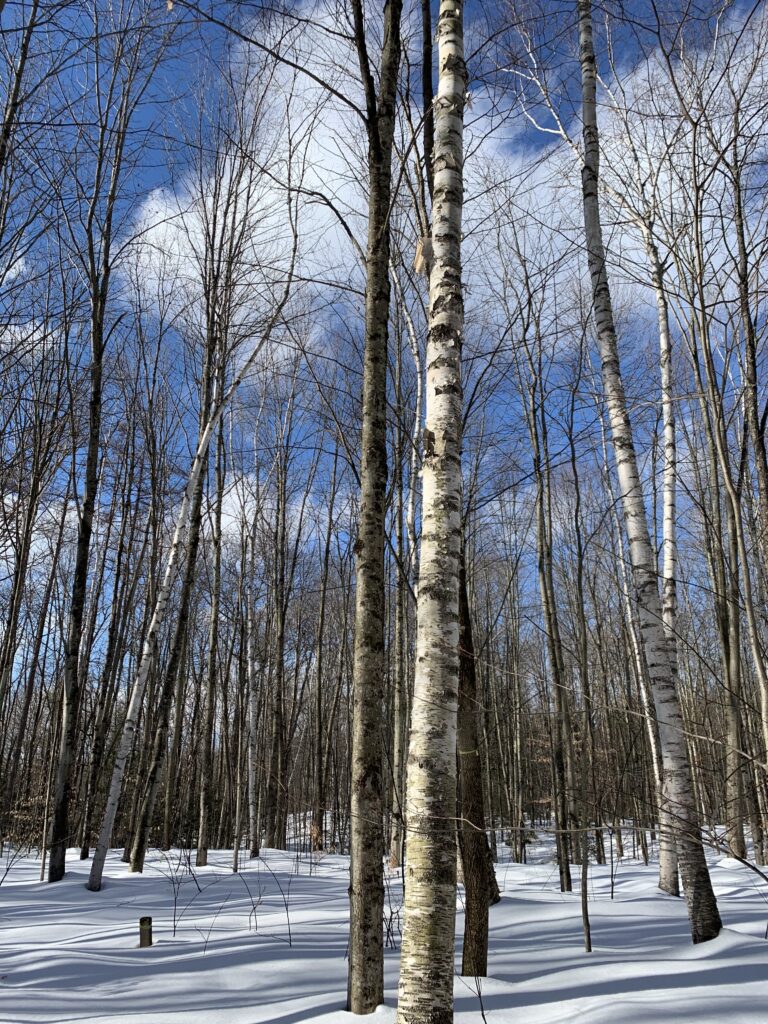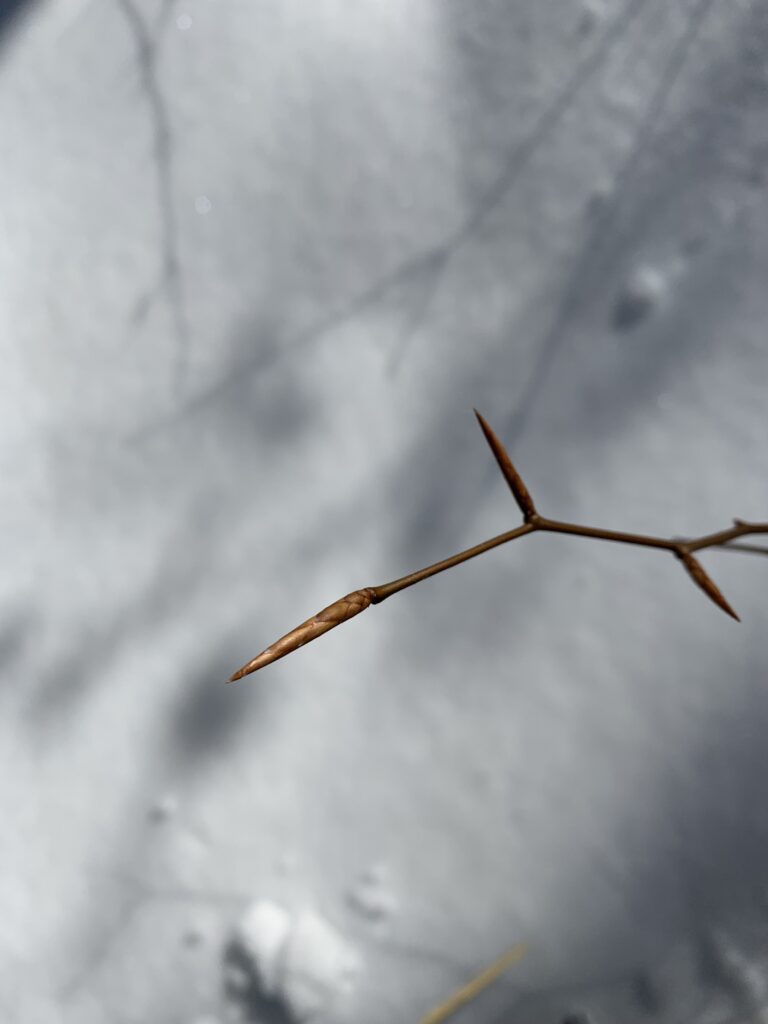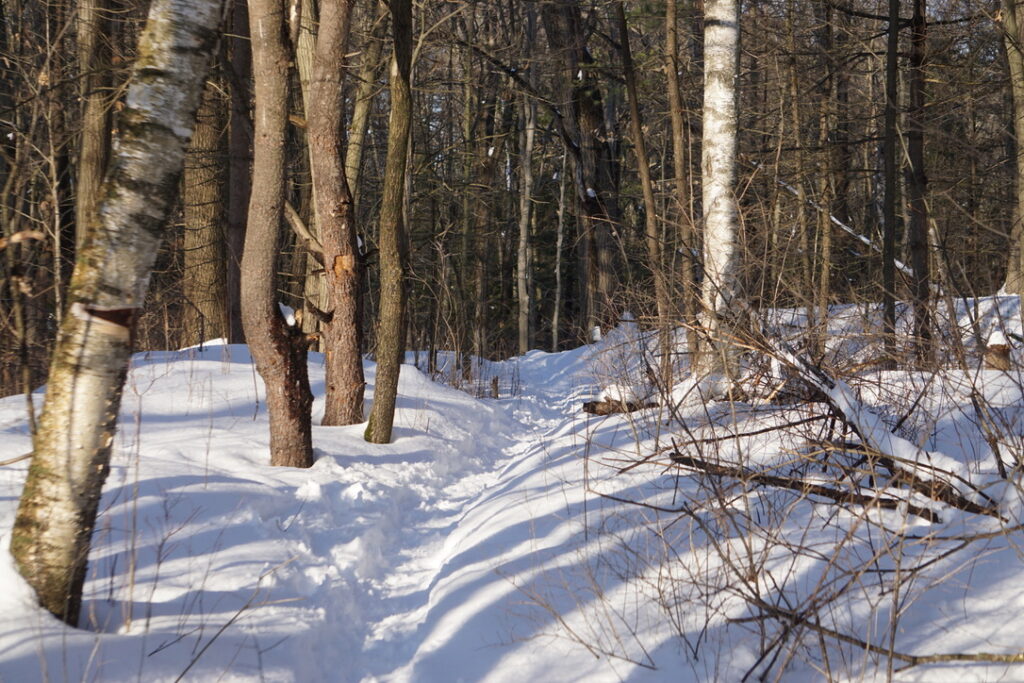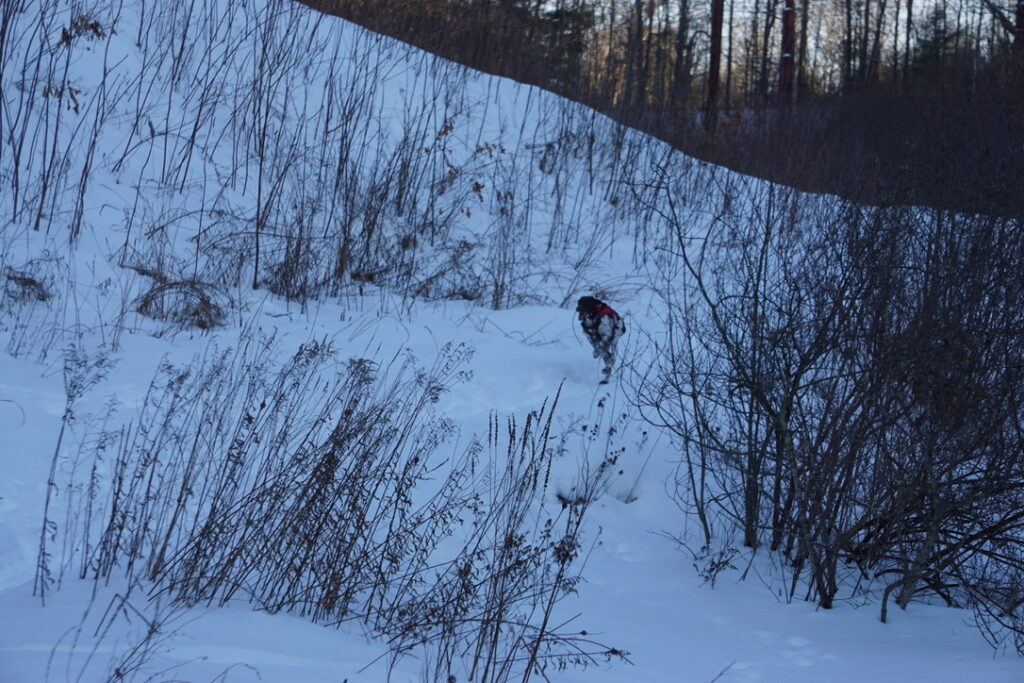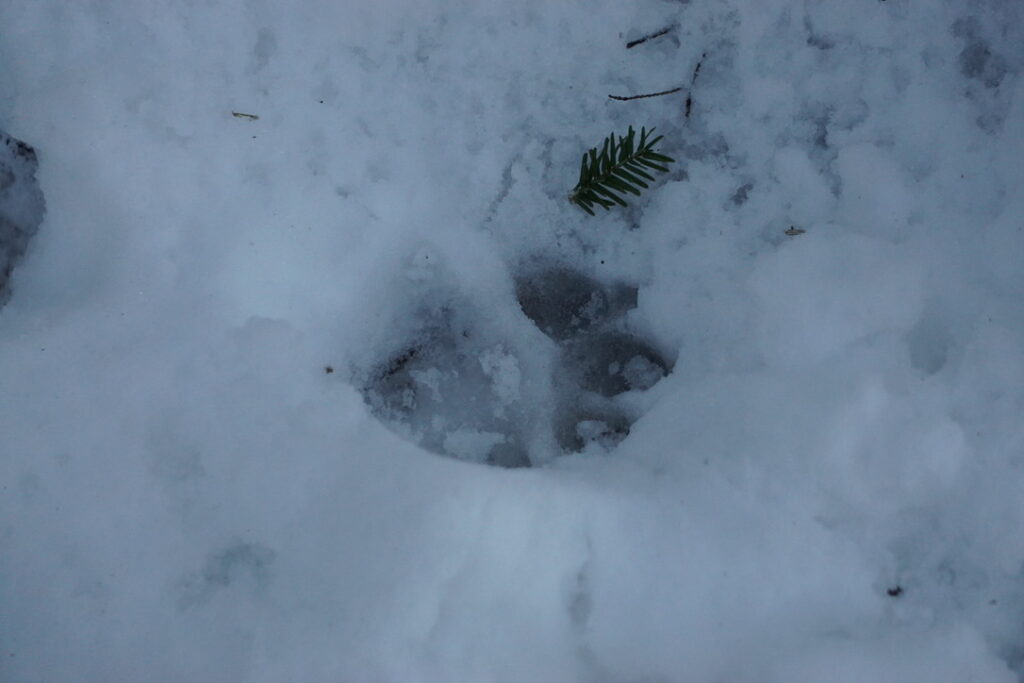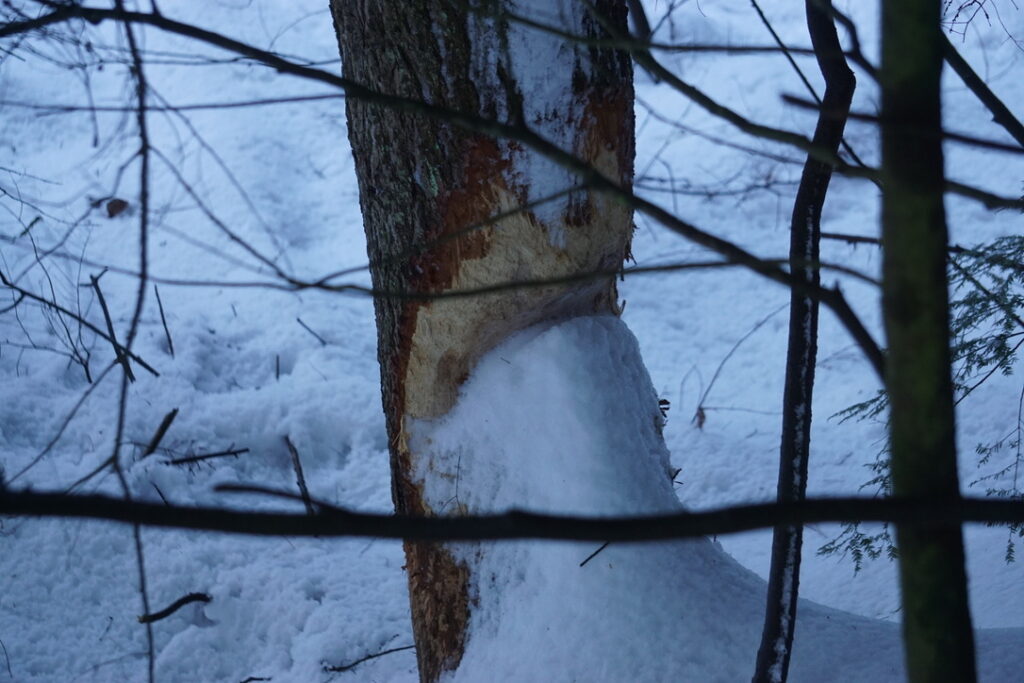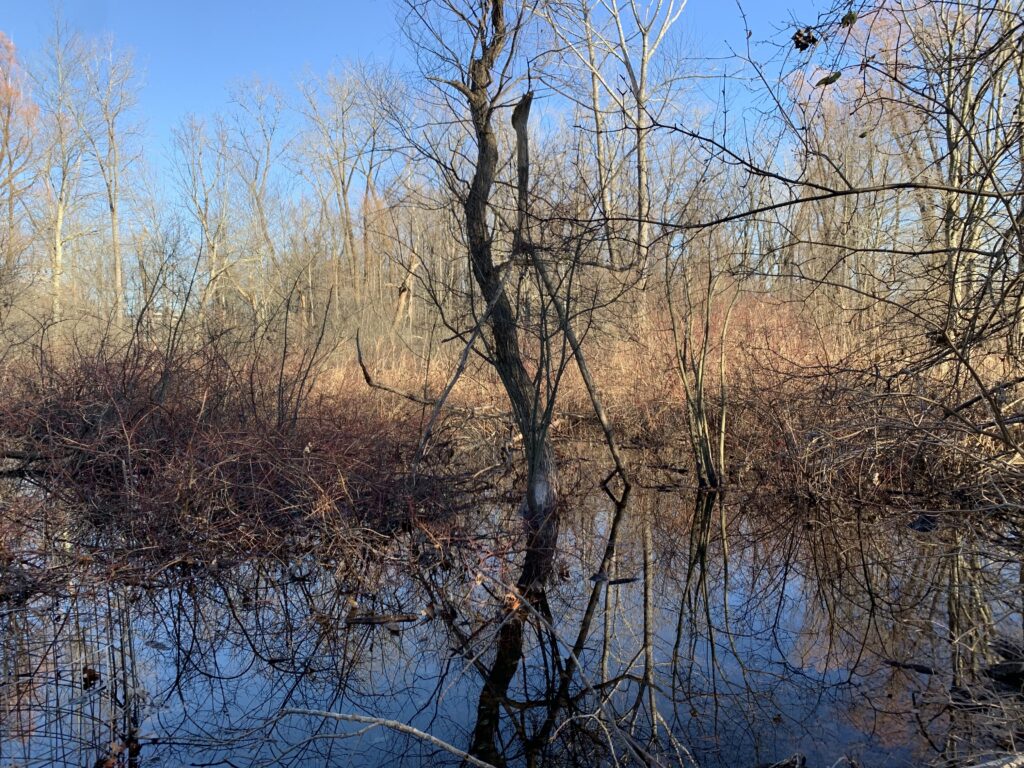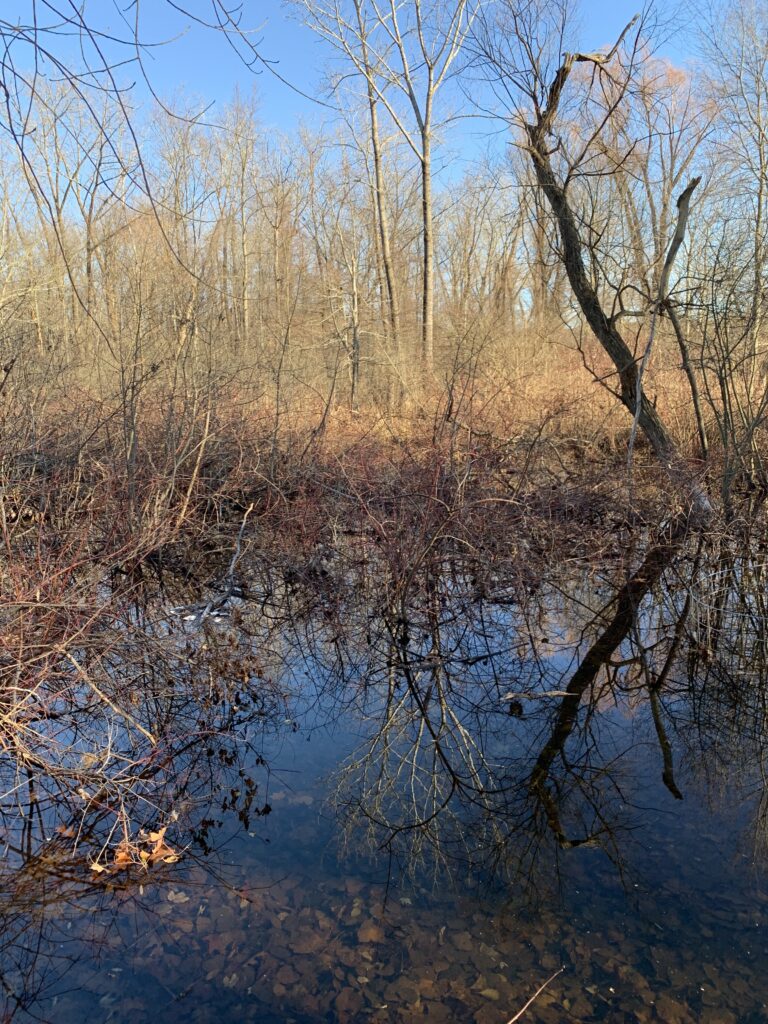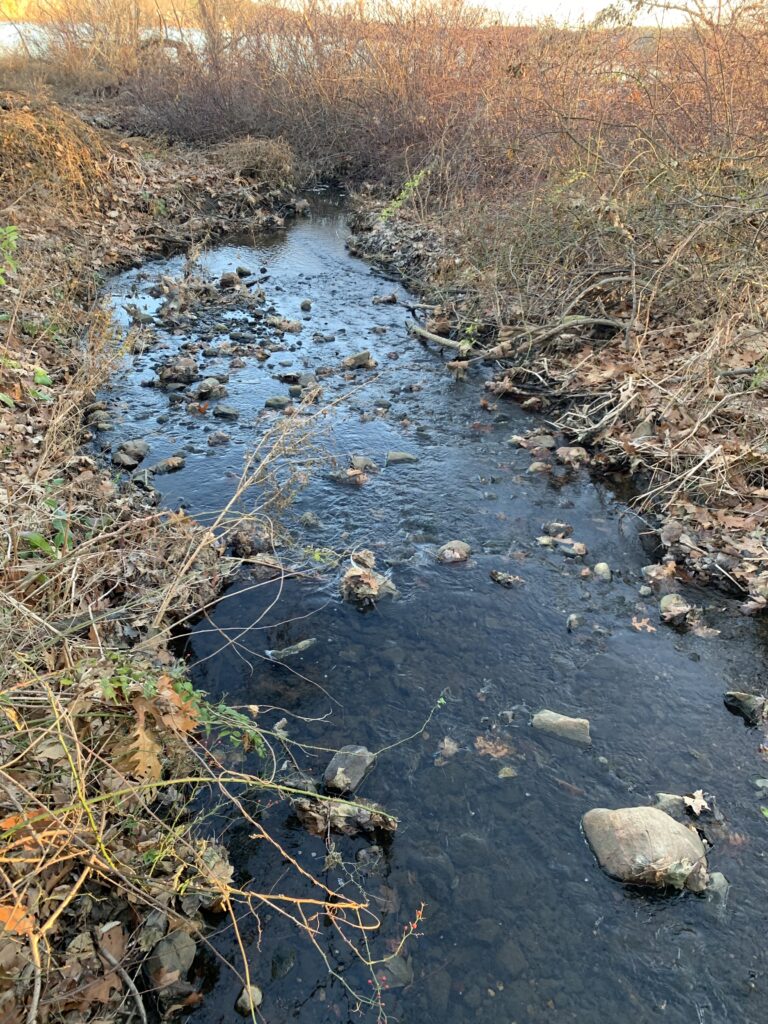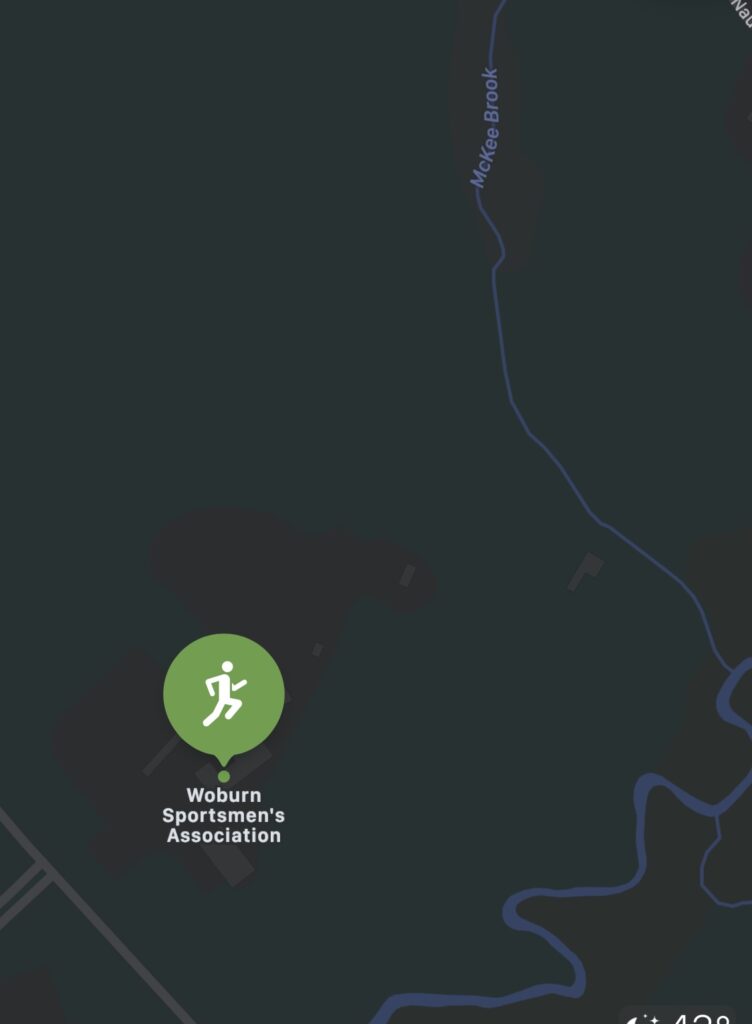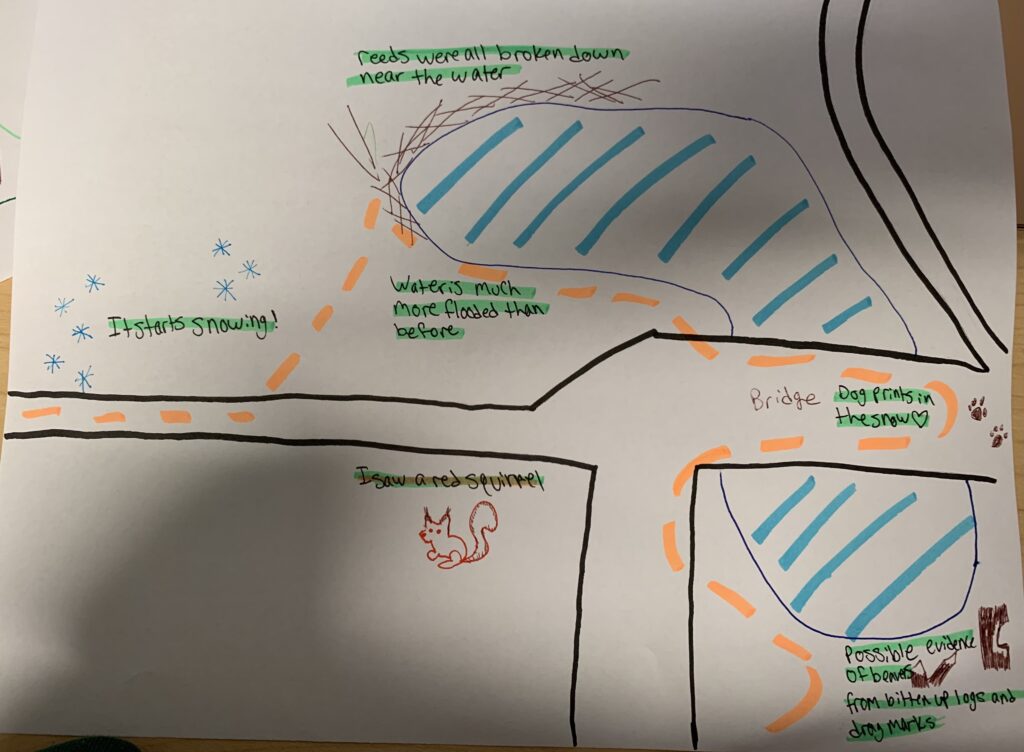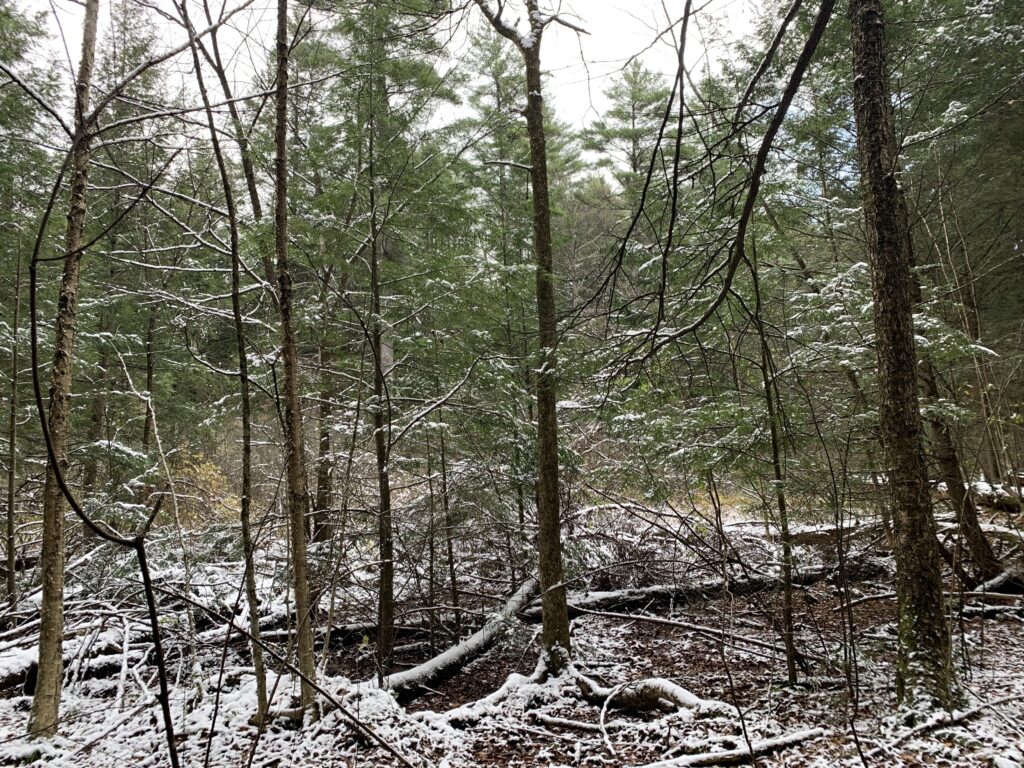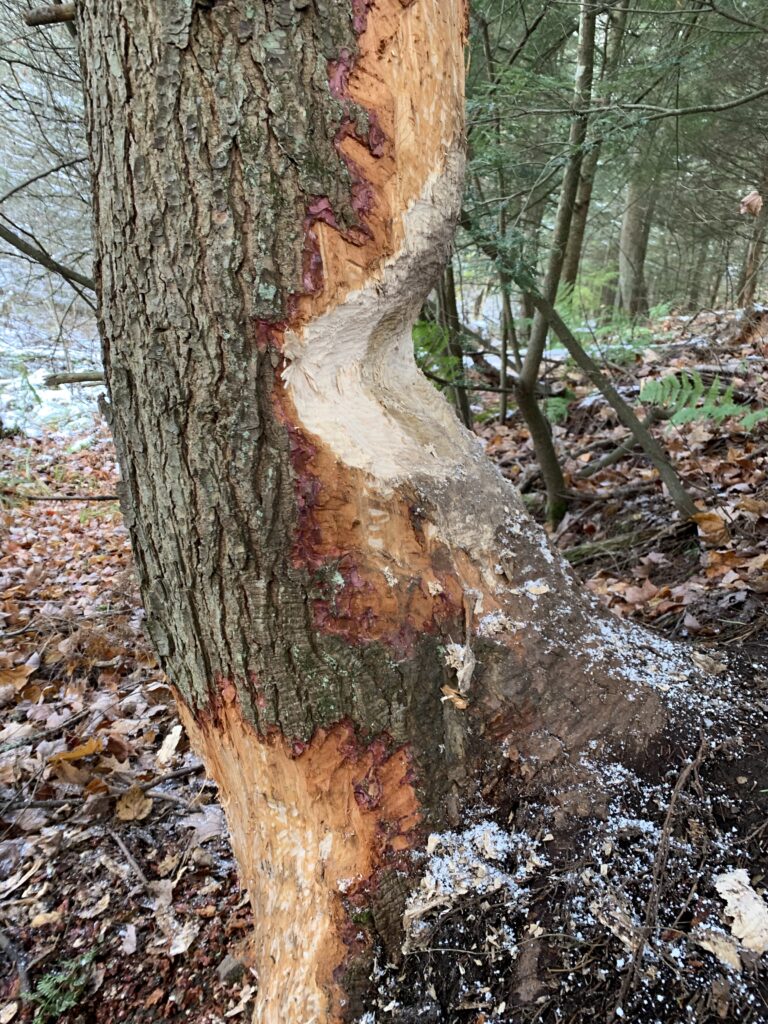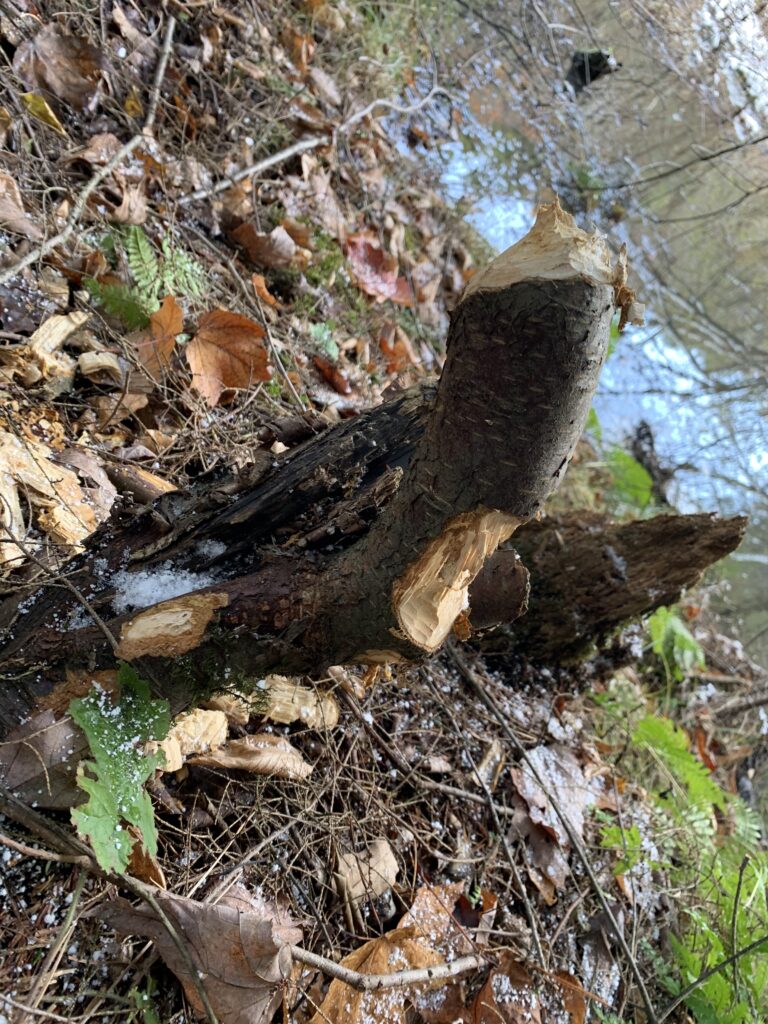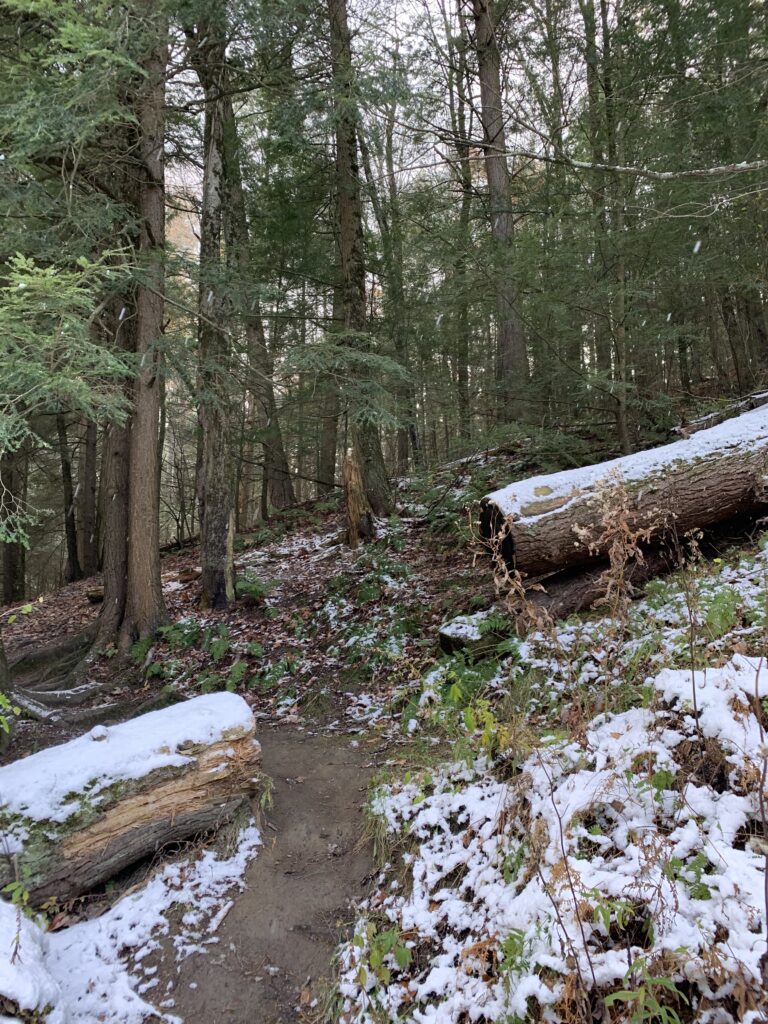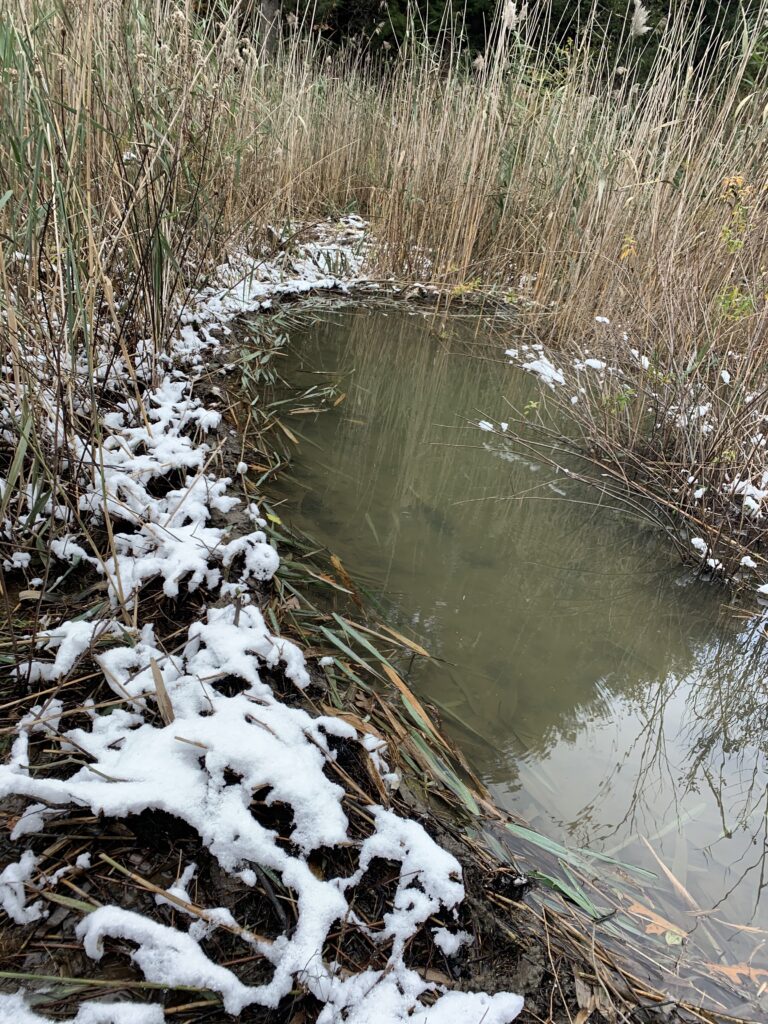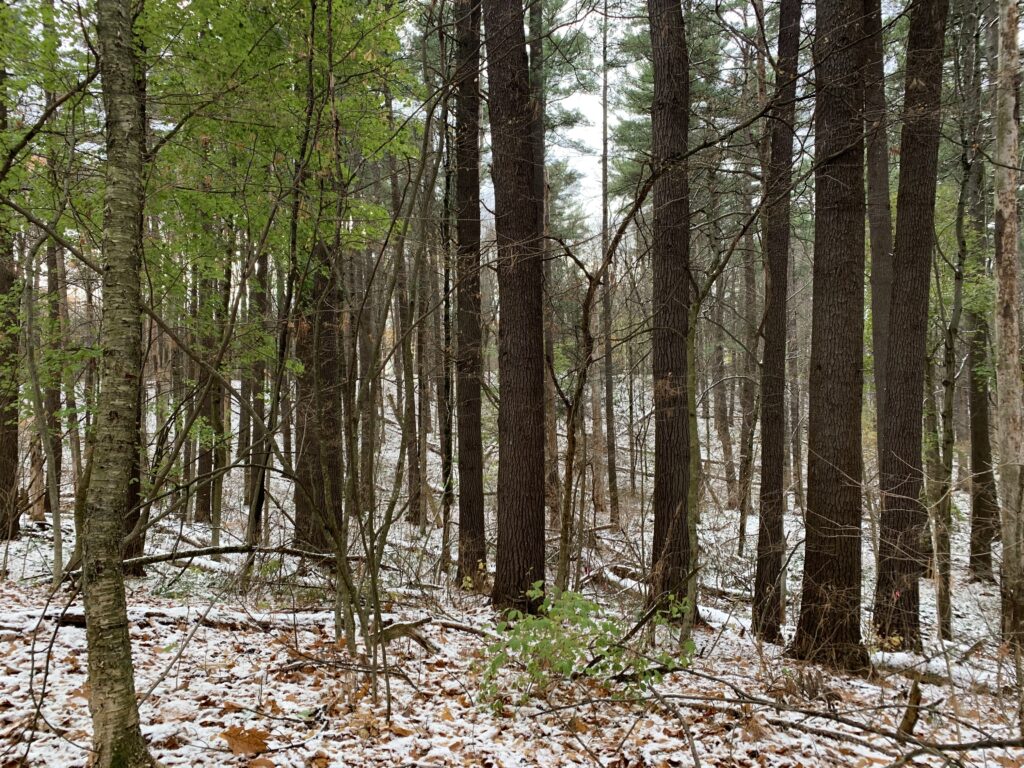As the semester drew to a close, I took my last trip to the beaver pond of Centennial Woods. On my way in I was contemplative. I came across the hair, bones and hooves of a deer. At my site, there were more small trees taken down by the beavers. The structures they were building were bigger and longer surrounding the edge of the water and the water was higher. I thought on the prompt while at on the bridge. The power lines arcing over my site don’t let me forget the connection between humans and my place. Were it not for the human need for the high tension wires this spot would not be clear brush but instead be forested like the rest of Centennial. The little sign on the bridge always catches my attention too. It says that the trail is out due to the flooding from the beavers and someone has written on the sign saying “Don’t kill us this time UVM”. The conflict between nature, UVM, and the public is perfectly illustrated there in print.
If I was asked at the beginning of the semester if I felt like I was a part of my place I would have said no. Now, after watching the changes and growth of my place, I do. I didn’t feel all that connected to my place originally, I felt more like a distant observer. Now I feel like a migratory bird coming to stay for a while, then moving on with plans to return in the future. I’ve become a regular feature, coming in and recording and occasionally harvesting what little things I find.
I am so proud of the industrious beavers! Their lodge is so much bigger! The wildflowers were finally bloomed as well.


